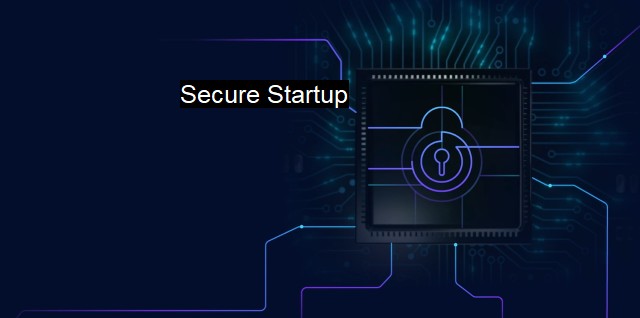What is Secure Startup?
Boosting Device Security: The Significance of Secure Startup & its Features in Cybersecurity and Antivirus Protection
“Secure Startup” is a feature inbuilt in certain computer systems, intended for enhancing the safety and security levels of personal and proprietary data stored on computing devices. the term primarily points towards the system of using encryption at a software or hardware level to safeguard the system's startup process. This feature ensures the initial boot process of a computer system hasn't been tampered with by malicious entities and that the system boots up securely, establishing itself into a normal functioning environment.The secure startup process utilizes several systems security features which includes robust login systems, software verification systems, hardware security modules (HSMs), firmware, BIOS, and kernel protections. These protection modules ensure that each level within the startup sequence is secure from outside interference, such as hackers or unauthorized users.
The Secure Startup mechanism starts right after powering up a device. It streamlines an array of rigorous security checks to verify the integrity of the hardware, firmware, and software components integrated into the device before granting full-scale access to the unit. During this operation, if the security checks flag any inconsistencies or anomalies attributable to harmful external interventions, the system can decide to limit/control access or entirely halt the startup procedure to protect the device and any sensitive data it may harbor.
Barring the aspect of operating system-level safety, Secure Startup can integrate with operating system-level device encryption security tools to protect the sensitive data within the device. This feature encrypts the user or system files stored on a hard disk at rest. For that reason, even if by some chance, a perpetrator gains physical or remote illicit access to the device, the data would be unintelligible owing to the encryption.
These invaluable encryption processes are only made possible courtesy of encryption keys. When the device is powered up, the user must supply valid authentication methods such as passwords, pins, or biometrics to help decrypt the encrypted disk, henceforth unlocking the device's full potential. In case of a security mishap such as forgetting your login credentials, there are recovery keys available to help you regain control over your machine.
When viewed from a cybersecurity perspective, secure boot plays a crucial role in maintaining the integrity of computing devices. It protects the boot process against bootkit attacks, which are known to install malicious code in the startup sequences to gain persistency. By enabling Secure boot, systems will only run software certified by trusted software developers, thereby providing a safeguard from any harmful attempts to subdue regular startup procedures.
Many software vendors have Secure Startup built into their proliferating systems. Features such as Bitlocker, a disk encryption tool available in Microsoft's Windows operating system, utilizes Secure Startup. BitLocker works by encrypting the drive to Aes-128 or Aes-256 encryption algorithm standards, boasting excellent security against potential threats to the data it harbors.
To sum up, Secure Startup mechanisms are an invaluable, indispensable tool vital for any entity striving to maintain optimum cyberhygiene. In exhibiting roles beyond merely shielding important data at rest, it oversees an organized orchestration of operations from the startup phase, thwarts myriad styles of potential threats, all the while maintaining an easy-to-use experience. Users should endeavor to take advantage of these security measures to guard against ever-evolving, sophisticated cybersecurity threats, strengthen the device's security posture and ultimately enforce the necessary security of personal and business-related data.

Secure Startup FAQs
What is a secure startup and why is it important?
A secure startup is the process of ensuring that a computer or device is free from malware and other security threats before it begins operating. It is important because it helps to prevent cyber attacks and protect sensitive data from being compromised.How can I ensure a secure startup on my computer or device?
There are several methods you can use to ensure a secure startup, such as installing and regularly updating antivirus software, enabling firewalls, and disabling unnecessary startup programs. You should also avoid opening suspicious emails or downloading files from unknown sources.What are some common types of malware that can affect a startup process?
Some common types of malware that can affect a startup process include viruses, spyware, adware, ransomware, and Trojans. These types of malware can cause various issues such as slow computer performance, data theft, and financial loss.If I experience issues during startup, could it be a sign of a security threat?
Yes, experiencing issues during startup could be a sign of a security threat. Some common signs of a security threat include a slow startup process, unusual error messages, and frequent pop-ups or alerts. It is important to investigate and address these issues promptly to prevent further damage or data loss.| | A | | | B | | | C | | | D | | | E | | | F | | | G | | | H | | | I | | | J | | | K | | | L | | | M | |
| | N | | | O | | | P | | | Q | | | R | | | S | | | T | | | U | | | V | | | W | | | X | | | Y | | | Z | |
| | 1 | | | 2 | | | 3 | | | 4 | | | 7 | | | 8 | | |||||||